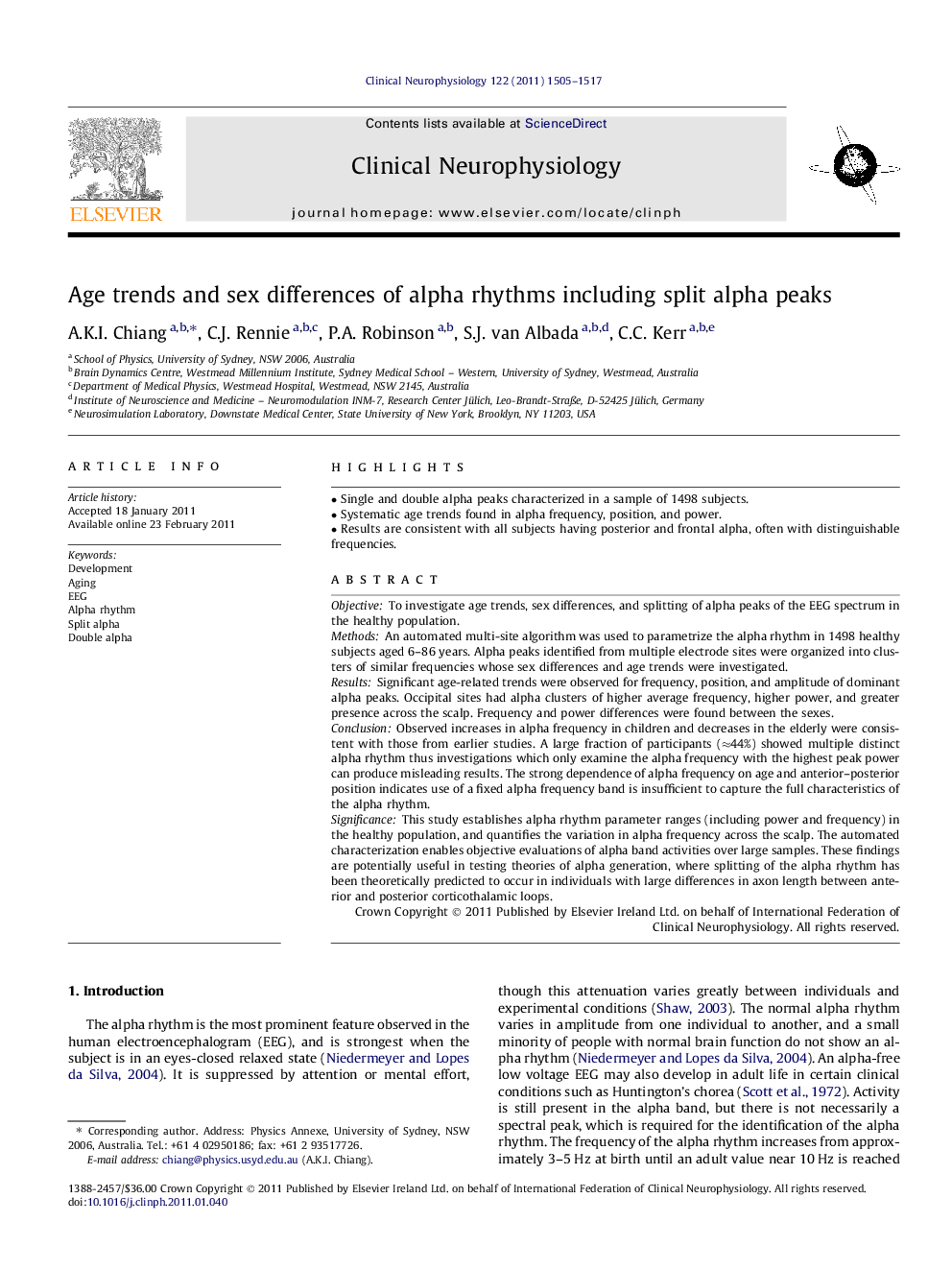| Article ID | Journal | Published Year | Pages | File Type |
|---|---|---|---|---|
| 3044013 | Clinical Neurophysiology | 2011 | 13 Pages |
ObjectiveTo investigate age trends, sex differences, and splitting of alpha peaks of the EEG spectrum in the healthy population.MethodsAn automated multi-site algorithm was used to parametrize the alpha rhythm in 1498 healthy subjects aged 6–86 years. Alpha peaks identified from multiple electrode sites were organized into clusters of similar frequencies whose sex differences and age trends were investigated.ResultsSignificant age-related trends were observed for frequency, position, and amplitude of dominant alpha peaks. Occipital sites had alpha clusters of higher average frequency, higher power, and greater presence across the scalp. Frequency and power differences were found between the sexes.ConclusionObserved increases in alpha frequency in children and decreases in the elderly were consistent with those from earlier studies. A large fraction of participants (≈44%) showed multiple distinct alpha rhythm thus investigations which only examine the alpha frequency with the highest peak power can produce misleading results. The strong dependence of alpha frequency on age and anterior–posterior position indicates use of a fixed alpha frequency band is insufficient to capture the full characteristics of the alpha rhythm.SignificanceThis study establishes alpha rhythm parameter ranges (including power and frequency) in the healthy population, and quantifies the variation in alpha frequency across the scalp. The automated characterization enables objective evaluations of alpha band activities over large samples. These findings are potentially useful in testing theories of alpha generation, where splitting of the alpha rhythm has been theoretically predicted to occur in individuals with large differences in axon length between anterior and posterior corticothalamic loops.
Research highlights► Single and double alpha peaks characterized in a sample of 1498 subjects. ► Systematic age trends found in alpha frequency, position, and power. ► Results are consistent with all subjects having posterior and frontal alpha, often with distinguishable frequencies.
